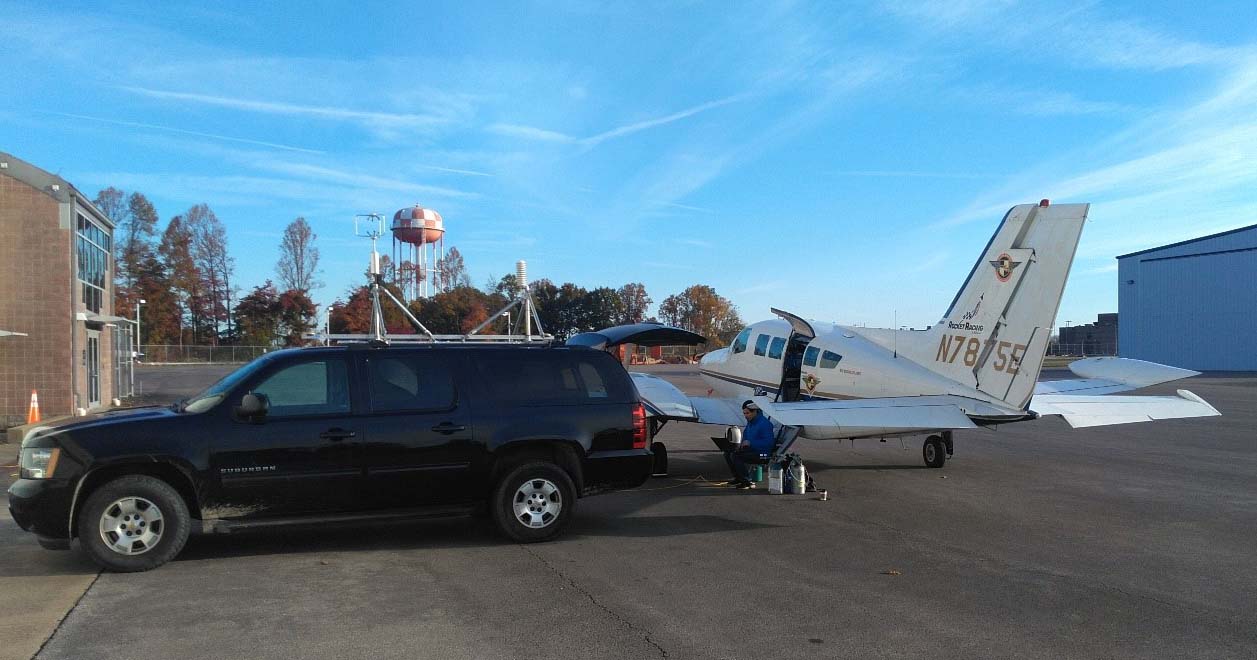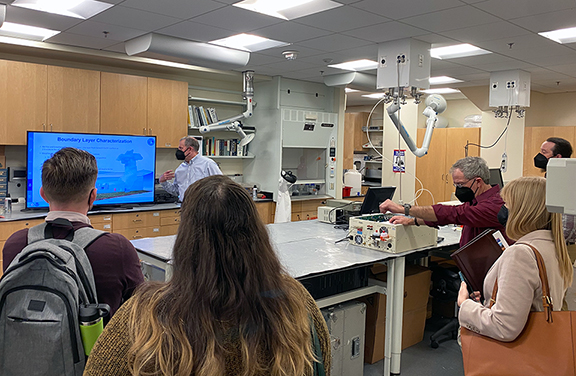ARL Weekly News – October 24, 2022
| Recent Events |
Marcellus Methane Survey
Phil Stratton and Xinrong Ren travelled to West Virginia and Pennsylvania to conduct aircraft and mobile methane surveys in the Marcellus oil and natural gas operation area. Measurements included atmospheric methane and its associated chemical species such as ethane (a tracer for natural gas) and other volatile organic compounds as well as meteorological parameters. A total of four research flights and about ten hours of driving were conducted in the area. While the aircraft measurements provided overall concentrations of methane and its associated chemicals in the entire study area, the mobile platform was driven to survey specific methane point sources such as oil and natural gas well pads, coal mine ventilation, as well as landfills in the area. The data will be further analyzed to estimate methane emissions from this area based on the aircraft mass balance approach to be compared to the emissions from a previous study and emission inventories.
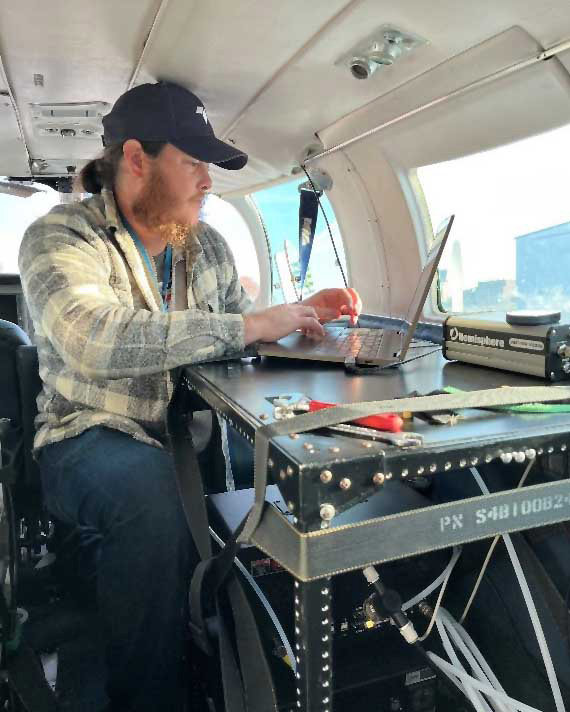

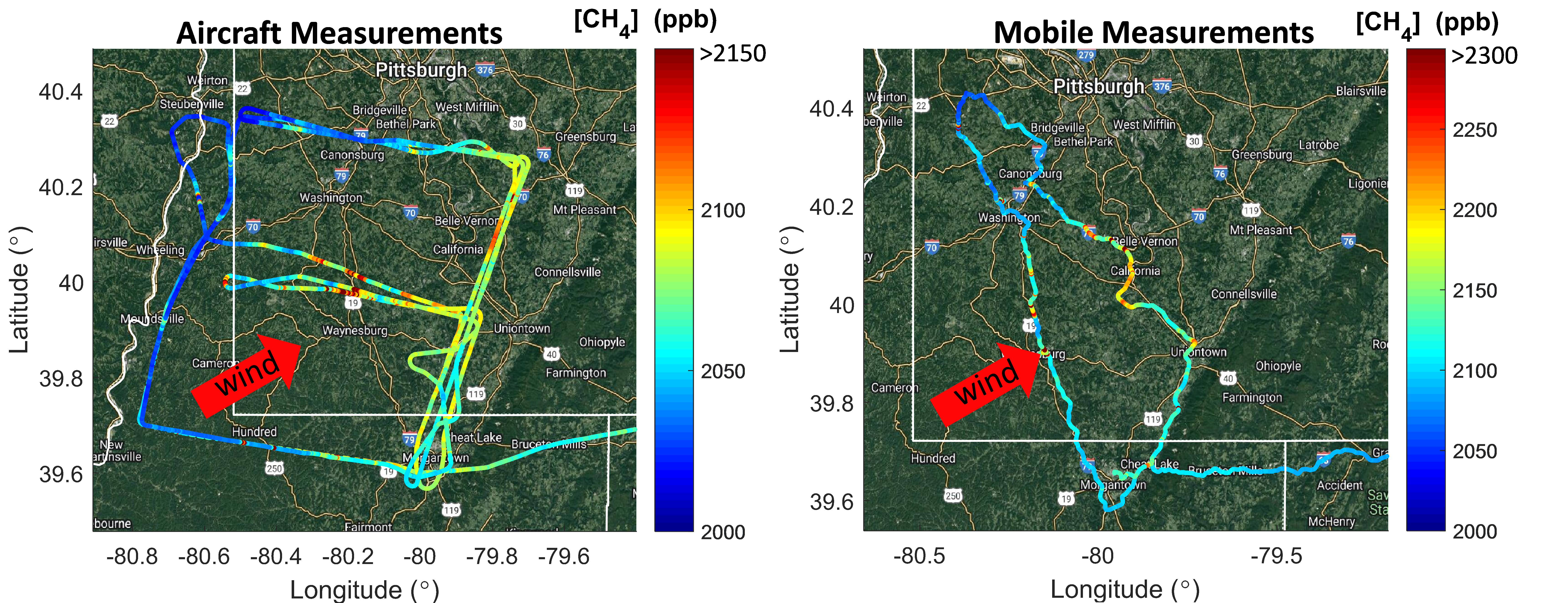
Knauss Fellows Tour ARL
A delegation of nine legislative Knauss Fellows from various Congressional offices and or Committees, took a tour of all the NOAA Line Office units in NCWCP on Monday October 24th. As part of that tour, the group stopped by the laboratory facilities in ARL’s Atmospheric Sciences and Modeling Division (ASMD), where in addition to a tour of the laboratory facility, three presentations were made by Dr. Howard Diamond who provided an overview of all of ARL, followed by Dr. Xinrong Ren who provided a presentation of ARL/ASMD’s greenhouse gas monitoring both from in-situ, airborne, and mobile land platforms; and capped off by a presentation by Dr. Winston Luke who provided an overview of ARL/ASMD’s mercury observing program. We were assisted in this by Phil Stratton, Fred Shen, and Margaret Simon. The presentations went very well, and a number of good questions were posed.
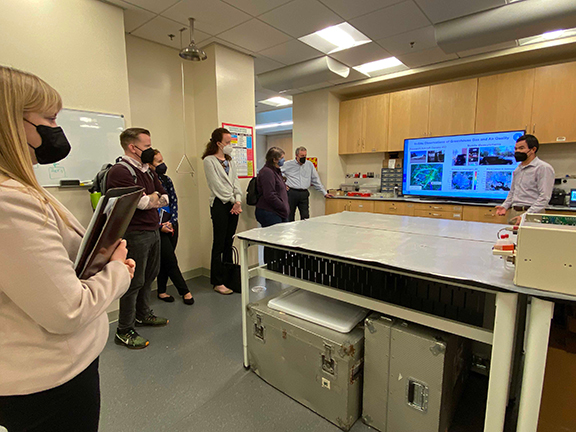
Air Quality Forecaster Focus Group Workshop
Alice Crawford attended the Air Quality Forecaster Focus Group Workshop on October 20th and 21st and gave a presentation titled “HYSPLIT system overview”. The workshop took place at the NCWCP building as well as virtually.
CCNY Atmospheric Sciences Seminar
Chris Loughner gave a seminar as part of the City College of New York’s Department of Earth and Atmospheric Sciences seminar series on October 21. His seminar was titled “Forecasting air pollution hazards and improving air pollution emissions estimates with the NOAA HYSPLIT transport and dispersion model.” The seminar gave an overview of the HYSPLIT model and discussed the use of HYSPLIT at improving emissions estimates within emissions inversion modeling frameworks.
Nebila Lichiheb Presents at the AGU Bridge Program
On October 19, five early career scientists from NOAA – LaTreese Denson, Keeli Otto, Nebila Lichiheb, Isha Renta, and John Moore – shared their educational and career pathways, advice and insights on pursuing a career at NOAA, and answered questions from students in AGU’s Bridge Program. NOAA is a featured agency for the 2022 Program.
The AGU Bridge Program works to advance equity in graduate geoscience education. Part of the NSF-funded Inclusive Graduate Education Network (IGEN), the goal is to increase the representation of students from historically marginalized identities in the geosciences and to create a welcoming and supportive environment in graduate education. By working with U.S. based graduate geoscience departments to expand their equitable educational practices, the AGU Bridge Program strives to create a community of departments working to evolve their practices and provides resources and learning opportunities geared toward continuing change.
The AGU Bridge Program is starting to collaborate with scientific organizations to provide students information on career and professional development and is excited to be working with NOAA to host a career panel for students in the program this October featuring OAR’s Keeli Otto, Nebila Lichiheb, Isha Renta joined by LaTreese Denson (NMFS) and John Moore (NWS) not only to share their educational and career pathways, advice and insights on pursuing a career at NOAA, but also to answer questions from the cohort of current students in the Bridge Program.
| Papers Published |
Pleim, J. E., Ran, L., Saylor, R. D., Willison, J., and Binkowski, F. S. (2022). A New Aerosol Dry Deposition Model for Air Quality and Climate Modeling. Journal of Advances in Modeling Earth Systems, 14, e2022MS003050. https://doi.org/10.1029/2022MS003050
A New Aerosol Dry Deposition Model for Air Quality and Climate Modeling
Abstract from paper: Dry deposition of aerosols from the atmosphere is an important but poorly understood and inadequately modeled process in atmospheric systems for climate and air quality. Comparisons of currently used aerosol dry deposition models to a compendia of published field measurement studies in various landscapes show very poor agreement over a wide range of particle sizes. In this study, we develop and test a new aerosol dry deposition model that is a modification of the current model in the Community Multiscale Air Quality (CMAQ) model. The new model agrees much better with measured dry deposition velocities across particle sizes. The key innovation is the addition of a second inertial impaction term for microscale obstacles such as leaf hairs, microscale ridges, and needleleaf edge effects. The most significant effect of the new model is to increase the mass dry deposition of the accumulation mode aerosols in CMAQ. Accumulation mode mass dry deposition velocities increase by almost an order of magnitude in forested areas with lesser increases for shorter vegetation. Peak PM2.5 concentrations are reduced in some forested areas by up to 40% in CMAQ simulations. Over the continuous United States, the new model reduced PM2.5 by an average of 16% for July 2018 at the Air Quality System monitoring sites. For summer 2018 simulations, bias and error of PM2.5 concentrations are significantly reduced, especially in forested areas.
Plain Language Summary: Aerosol dry deposition is an important sink for atmospheric particles that are a health hazard and a significant climate forcer. Uncertainties in modeling aerosol dry deposition hamper accurate predictions of air quality and climate. A new aerosol dry deposition model is developed that better agrees with observations of aerosol dry deposition velocity for a variety of vegetation such as forests, grasslands, and water surfaces. This improved aerosol dry deposition model when incorporated into air quality and climate models will improve the accuracy of model predictions.


